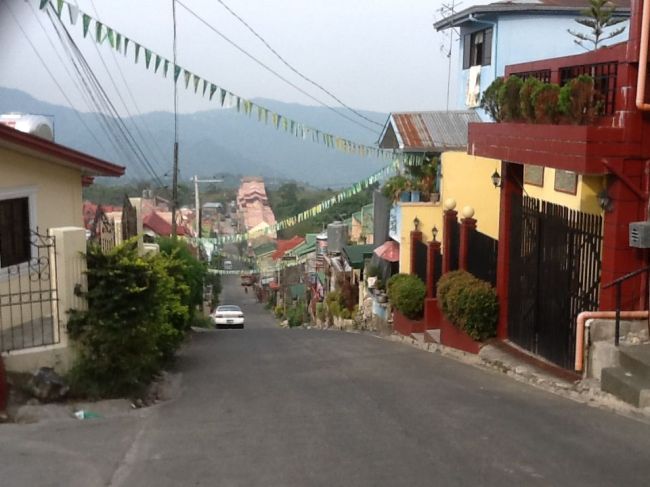Dalat and Tam Dao in Vietnam, Darjeeling in India, Bandung on Java, Baguio in the Philippines: all high places where the local and foreign elites escaped (and still escape) the summer heat of the lowlands.
 At an altitude of a mile, Baguio is famous for its pines, strawberries and cool weather crops like broccoli. It has been a refuge since 1903 when the Americans established it as “The Summer Capital of the Philippines”. Now thousands of Filipino tourists flock here almost any time of year.
At an altitude of a mile, Baguio is famous for its pines, strawberries and cool weather crops like broccoli. It has been a refuge since 1903 when the Americans established it as “The Summer Capital of the Philippines”. Now thousands of Filipino tourists flock here almost any time of year.
My friend Jeff in Dublin knew Baguio as a boy some 50 years ago. He has a signboard for the old Pines Hotel that he often stayed at when his father was teaching courses in business and management for Harvard Business School. The Pines Hotel has disappeared, its ruins buried under a huge Shoe Mart (SM) mall. And the city Jeff knew has been transformed almost beyond recognition.
I first knew Baguio 25 years ago, and even in that time span, the change is tremendous. The city now sprawls way beyond its old boundaries, onto steep mountain slopes that once grew vegetables and trees. They now grow houses vulnerable to landslides in the rainy season. The traffic has now created smog that lingers in the bowl of the old city. Baguio still has beautiful spots, fine restaurants and galleries, a cinematheque that shows classic Filipino films, a great book store. However, it is not what it once was. (What is?)
The photo above shows one of the streets near our friends’ house on the extreme northern edge of the city. The street reaches a 45 degree grade in places, not easy to walk up, though the jeepneys can still grind up the slope in lowest gear. Two friends joke about setting up a business renting skateboards very cheap, and selling insurance very high.
We walk to the end of this street, where the streets end and a wire fence separates us from the green beyond. Behind us on our left, broccoli grows on terraces carved out of the hillside. Somewhere to our right, a field of sunflowers. A hint of what used to be.